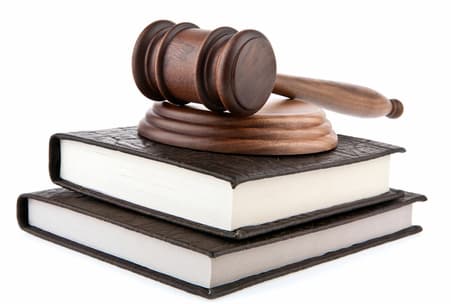Trust Estate
Avoiding Conflicts In Aristocratic Family Trusts

This article delves into the origins of trusts, how conflicts around them occur and how (hopefully) they can be resolved.
The following commentary about trusts and their use by “aristocrats” (not a regular term in these pages) comes from Kerry Venn (pictured below), associate in the wills and trusts disputes team at Wilsons Solicitors. The editors are pleased to receive such insights and welcome feedback. To get involved in these conversations, email tom.burroughes@wealthbriefing.com and amanda.cheesley@clearviewpublishing.com.

Kerry Venn
For centuries, family trusts have been the backbone of
aristocratic wealth, keeping estates, land and legacy safely
within the bloodline. But as families evolve – and fortunes
diversify – these structures can become pressure cookers for
intergenerational tension. Understanding how these conflicts
arise, and how to prevent them, is essential for any family
hoping to protect both its wealth and its relationships.
Today, trusts remain vital for high net worth individuals,
serving as tools for wealth preservation, legacy protection, tax
planning, and asset management.
Historical context of trusts
Trust law originated in medieval England, when land ownership
determined wealth and power. In the 12th and 13th centuries,
landowners created early trusts, or “uses,” to manage property
for others’ benefit, circumventing restrictive feudal inheritance
laws.
By the 17th century, trust law had matured and was firmly
embedded as a tool for preserving estates, titles and family
wealth from taxation and creditors.
Fast forward to the modern era, and trusts have become a
cornerstone of estate planning for high net worth families,
offering tax efficiency, asset protection and long-term
control.
Causes of intergenerational trust conflicts
While trusts are designed to preserve wealth, several factors can
lead to disputes:
1. Different generational priorities
Younger heirs may lean towards modern investment strategies or
expect more flexibility, while older generations prioritise
tradition and property preservation. Conflicting priorities can
cause friction, especially if trust terms are outdated.
2. Ambiguities in trust documents
Poorly drafted trusts may create confusion about asset management
or distribution, fostering disputes among beneficiaries.
3. Changing social and economic contexts
Shifts in taxation, inheritance laws, and societal attitudes may
render older trust structures inadequate, prompting
disagreements.
4. Family dynamics
Old rivalries, breakdowns in communication, or perceived
favouritism can escalate into formal legal disputes.
Strategies to prevent conflict before it
starts
-- Clear and precise drafting
Trusts should explicitly define their purpose, trustee roles, and
rules for managing assets. Detailed guidelines for income
distribution, property sales, or investments reduce potential
conflicts.
-- Regular communication and family governance
Family meetings or governance frameworks maintain transparency,
allowing beneficiaries' concerns to be addressed early.
Conflict-resolution mechanisms in trust documents help avoid
litigation.
-- Appointment of professional trustees
Neutral professionals, such as lawyers, accountants, or trust
companies, ensure impartial oversight, reducing family tension
while upholding the settlor’s intentions.
-- Build in flexibility
Periodic reviews allow adjustments for changing family
circumstances or economic conditions, keeping the trust relevant.
-- Mediation and dispute resolution clauses
Incorporating mediation or arbitration clauses ensures
disagreements may be settled before court proceedings, saving
time and costs.
Case Study 1: Nathan James Smith v Ian Patrick Campbell
[2025] EWHC3011
This recent case involved a family will trust created from an £8
million ($10.5 million) veterinary supplies business. The
claimants sought trustee removal, alleging failures in
notification, accounting, and fair treatment.
The court dismissed most allegations but noted that some of the
trustees' recognised that hostility could impede proper
administration. The court removed two trustees, (while retaining
two family trustees), and appointed an independent professional
trustee for oversight.
The judgment reaffirmed that trustee removal is guided by
beneficiaries’ welfare and effective trust administration,
balancing family representation with impartial oversight.
Case Study 2: The Earl of Yarmouth v Ragley Trust Company Ltd
[2025] EWHC 1099 (Ch),
The opposite outcome was reached where Lord Yarmouth
unsuccessfully challenged the trustees of his family's £85
million estate for allegedly failing to maximise income and being
influenced by his parents. He subsequently sought their removal,
claiming they lacked independence.
The trustees argued that their actions aligned with the settlor's
wishes, Lord Yarmouth's grandfather, which was to prioritise the
future preservation of Ragley Hall, the family estate.
The court upheld the trustees' position, confirming that they
acted appropriately under the trust’s objectives. Lord Yarmouth
was also ordered to pay both his and the trustees’ legal costs
– estimated at over £1.3 million!
Legal costs: “Winner Takes All”
The Earl of Yarmouth's case illustrates the costly principle of
“costs follow the event,” whereby the losing party generally
pays the winner’s legal costs. This principle:
-- promotes fairness by compensating successful parties;
-- deters frivolous, weak claims and encourages responsible
litigation; and
-- encourages settlements, reducing strain on the courts and
unnecessary legal expense.
Courts do retain discretion and may depart from the rule,
considering the parties' good faith, settlement offers, and
conduct. However – the general principle stands, balancing
fairness, efficiency, and access to justice while discouraging
weak claims.
Conclusion
Intergenerational conflict in family trusts is common but
avoidable. Clear drafting, professional trustees, transparent
communication, flexible structures, and mediation clauses can
dramatically reduce the risk of friction.
With the right planning, trusts can continue to do what they were
designed for: preserve wealth, protect family legacies and
support future generations – without dragging the family
through costly a courtroom drama and eroding long-standing,
valuable assets.